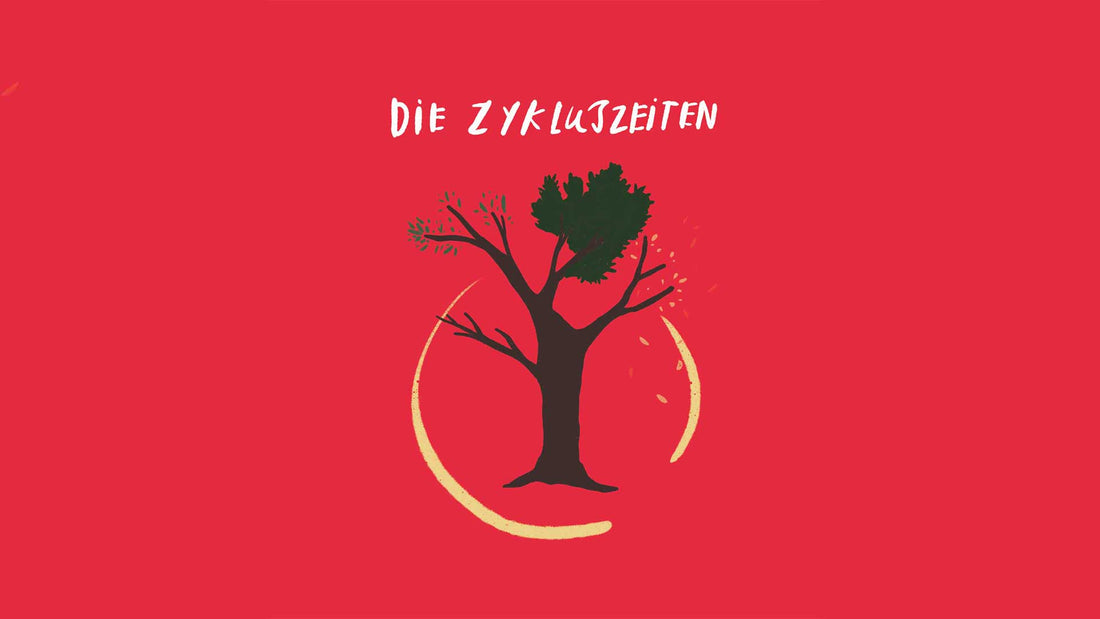
The cycle times
By Susan Reznik (text) & Silja Elsener (illustration)
Life is a cycle. We are born and die and become part of the earth again and new life arises. The days, the years, our seasons, the moon. Everything repeats itself in phases. The day is divided into morning, noon, evening and night, the year into quarters and the seasons into spring, summer, autumn and winter. In nature, the division into four phases can be seen again and again. It's very fitting that the female cycle, which is a symbol of nature and life itself, can also be divided into four phases.

As with the seasons, we can divide our cycle into winter, spring, summer and autumn phases. If you prefer to use scientific terms for it, you can also refer to it as menstruation, follicular phase, ovulation and luteal phase.

The Winter
Maybe you can already guess: winter is the phase of menstruation. Fortunately, this doesn't last what feels like eight months of the year like the Swiss winter, but on average between three and seven days. During this time we often long for peace and quiet. In winter, many animals rest and nature shuts down completely. You can also use this symbol for the time of your period. During this cycle phase, take a lot of time and space for reflection, relaxation and extensive self-care. Listen to your body and give it what it needs most now.

Spring
Life around us slowly unfolds again during this time: animals awaken from hibernation and flora and fauna sprout around us. And the longer and warmer days suddenly make us feel more light. In the spring phase of the cycle, the follicular phase (so called because during this time an egg follicle, so-called follicle, grows), we return to our bloom after menstruation. The estrogen level rises and we have more energy, more joy in life, feel more self-confident and our skin becomes clearer. So it's not a bad idea to tackle new ideas and projects during this time.

The summer
The zenith, ovulation, has been reached: During this time, the hormone levels of dopamine, testosterone, serotonin and estrogen are at their highest. Our sexual desire is in full bloom, our energy levels are at their peak and our self-love is at a high. Many people feel most comfortable in their bodies during this time and radiate this to the outside world. This security is also a good time to conduct negotiations, for example.

Autumn
During this time, everything in nature is preparing for the coming rest phase of winter. During the autumn phase of our cycle, the luteal phase, everything in our body also prepares for the upcoming menstruation. During this time, progesterone increases 300 times the estrogen level. It is the longest phase of the cycle and the time when many of us suffer from PMS. Take time for yourself, set your boundaries and pay special attention to your needs now. We have collected for you what else you can do against the PMS blues here in our last blog post.
It's impressive how different we feel in the different cycle times. If we get to know our menstrual cycle and therefore have a better understanding of when things are going on within us, we can learn to live in harmony with our cycle instead of letting it dominate us. We think that’s really important! For example, we can better manage our energy reserves and adapt to the phases of our body. Because: Our own experience shows that such a cyclical life can also alleviate PMS symptoms in the long term. Awesome, right?
